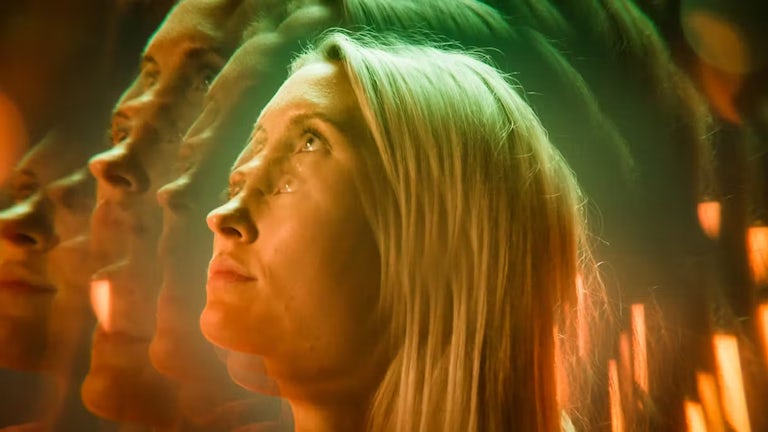Shopping Bag (0)
Your shopping bag is empty


In a new documentary series and book, creative agency Amplify points to a convergence between the creative and brand universes – and a new generation of ‘worldbuilders’ straddling the two.
Worldbuilding is not a new concept. It’s what the greats of science fiction and fantasy
are praised for when they create something new, rich, and convincing: Tolkien’s
Middle Earth; Atwood’s Gilead; and Pratchett’s Discworld.
Now, according to a splashy play from creative agency Amplify, worldbuilding is also
what sets apart the best brands. First unveiled in March at the SXSW festival
(alongside brands like Pinterest and Lego), the agency launched its ‘worldbuilding’
ethos in earnest this week, with the first film in an eight-part docuseries directed by
Bexy Cameron; a glossy companion book; and a launch event in London to be
followed by more in LA, Sydney and Paris.
The series and book feature interviews with figures working at the intersection of
brand building and culture: film production shop Legendary Entertainment’s Ali
Mendes; Lego’s global brand director Kris Crockett; Pinterest’s head of brand
experiences Judy Lee; and author Liv Little. Alongside the interviews are profiles of
scores of worldbuilding ‘pioneers’, from creative director Virgil Abloh to US supreme
court justice Ruth Bader Ginsburg and modern multihyphenates like Donald Glover
and Ryan Reynolds.
The work, Amplify’s founder and chief exec Jonathan Emmins tells The Drum, is not a
new positioning for the agency, but more of a cultural campaign and a “passion
project” that shows “how we believe marketing is evolving”.
Still, investment has been “substantial” and footed by the agency. Its value will be in
convincing brand marketers that Amplify is an agency with deep roots in culture and
big ambitions. “I’m a reluctant CEO; I’m a creative at heart, so I’ll always be about the
creative,” Emmins says. “There’s a commercial upside, but it’s more of a by-product”.
At its center is the heralding of a paradigm shift – from a two-dimensional, didactic
brand world to one that is “fast-moving, 3D and co-authored”
“As a marketer, so often we think in terms of campaigns and channels when we
should be thinking in terms of outcomes and relationships,” says Emmins. But a
world-building marketer looks further than the campaign to its place in a world they
are creating – asking, he says, “how do you make sure the IP’s a chapter in the brand’s
story?” This means understanding that you’re “co-authoring your brands with your
audiences” (and becoming comfortable with the loss of control that might require).
The work’s premise is that products and brands can and should be just like a cultural
artifact in the worlds they create and the fandoms that populate them – that, as
Amplify’s executive creative director Alex Wilson says, “it’s just as easy to take a
product and built a world around it” as for a loved media property. Lego, in this
telling, shares more with Disney than it does with most toy manufacturers: a
consistent world across platforms and properties; avid fans; and both community and
storytelling at its centre.
Wilson was one of a small team at Amplify who inaugurated the idea, which he says
“organically grew” out of the agency’s creative ambitions: “to coexist within the
marketing world and the cultural world.”
Wilson goes on: “We’re not a brand experience agency, in the sense of an event
agency, anymore. For the last five years or so, we've not been that... We’re a global
creative agency that creates work through the lens of experience and culture. We can
actively play in any of those spaces, in everything from entertainment to brand and
Beyond.”
“We see no reason to separate our work from the things we love and are inspired by,
that's how we and our clients can strive to make work that truly informs and
entertains.”
According to the handful of brand marketers we cornered at the launch event at
least, worldbuilding is not a philosophical abstract, but a real approach to tackling a
tricky brand environment.
we’ve been looking at since just before the pandemic. It’s exactly where we’re at with
the Lush brand.” You can see this, she says, in the brand’s recent collabs – like a recent
tie-in with The Super Mario Bros Movie, but also in headline-grabbing community-
focused initiatives like withdrawing from social media and pulling spend away from big tech.
Morton goes on: “We’re always looking at brand building and building the lush
community. We have a fiercely loyal customer base, but we’re always trying to look to
evolve them and make sure that we connect with younger generations”.
Meanwhile, for UKTV, BBC Studios’ commercial broadcast arm, world building is a
very real goal, says Peter Allison, head of design and brand. In the media space, he
says, “the mega brands are creating brand worlds”, “really dialing up their master
brand”, and all others must do the same if they’re to compete at a high level.
“Historically, we’ve treated our brands separately,” Allison says; but now a more
“unified approach”, led by a “flexible but consistent design system” is becoming
Standard.
“This is where design and execution become so important,” Allison concludes. “You
need that flexibility to speak to different audiences in those different communities,
but still keep it within that brand world”.
As for Pinterest’s brand experience chief Judy Lee, worldbuilding is not just “a nice
framework for a lot of the work I do... bringing the world of Pinterest to life, in real
life”. It’s intimately related to the twin values of inspiration and inclusion at the heart
of the platform’s brand. “I feel like I belong because I can see myself in the product
and the world,” says Lee – or, to look at the obverse, “there’s nothing that feels worse
than feeling like you don’t belong in the world”. Building brand worlds collaboratively with audiences just might, she says, increase belonging and decrease its opposite.
To read the full article visit The Drum.